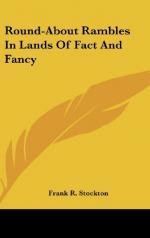It seems to me that these birds must have a very pleasant time during the setting season. To start out some fine morning, after it has had its breakfast of bugs and things, to gently push its nest from shore; to jump on board; to sit down comfortably on the eggs, and sticking out its web-footed legs on each side, to paddle away among the water-lilies and the beautiful green rushes, in company with other little grebes, all uniting business and pleasure in the same way, must be, indeed, quite charming to an appreciative duck.
[Illustration]
If it were to happen to storm, however, when the grebe was at a distance from shore, her little craft might be upset and her cargo of eggs go to the bottom. But I expect the grebes are very good sailors, and know when to look for bad weather.
A nest full of young grebes just hatched, with the mother swimming behind, pushing them along with her beak, or towing them by the loose end of a twig, must be a very singular and interesting sight.
[Illustration]
An Ostrich has very different views in regard to a nest from a little grebe. Instead of wishing to take its nest about with it, wherever it goes, the ostrich does not care for a great deal of nest-work.
It is, however, a bird of more domestic habits than some writers would have us believe; for although it does cover up its eggs in the sand, and then let the sun help hatch them, it is not altogether inattentive to its nest. The ostrich makes a large nest in the sand, where, it is said, the eggs of several families are deposited. These eggs are very carefully arranged in the great hole or basin that has been formed in the soft sand, and, during the daytime, they are often covered up and left to be gently heated by the rays of the sun. But the ostrich sits upon her nest at night, and in many cases the male bird has been known to sit upon the eggs all day. An ostrich nest is a sort of a wholesale establishment. There are not only a great many eggs in the nest, but dozens of them are often found lying about on the sand around it.
This apparent waste is explained by some naturalists by the statement that these scattered eggs are intended for the food of the young ones when they are hatched. This may be true; but in that case young ostriches cannot be very particular about the flavor of the eggs they eat. A few days in the hot sun of the desert would be very likely to make eggs of any kind taste rather strongly. But ostrich eggs are so large, and their shells are so thick, that they may keep better than the eggs to which we are accustomed.
From nests which are built flat on the ground, let us now go to some that are placed as high from the earth as their builders can get them. The nests of the Storks are of this kind.
A pair of storks will select, as a site for their nest, a lofty place among the rocks; the top of some old ruins; or, when domesticated, as they often are, the top of a chimney. But when there are a number of storks living together in a community, they very often settle in a grove of tall trees and build their nests on the highest branches.




